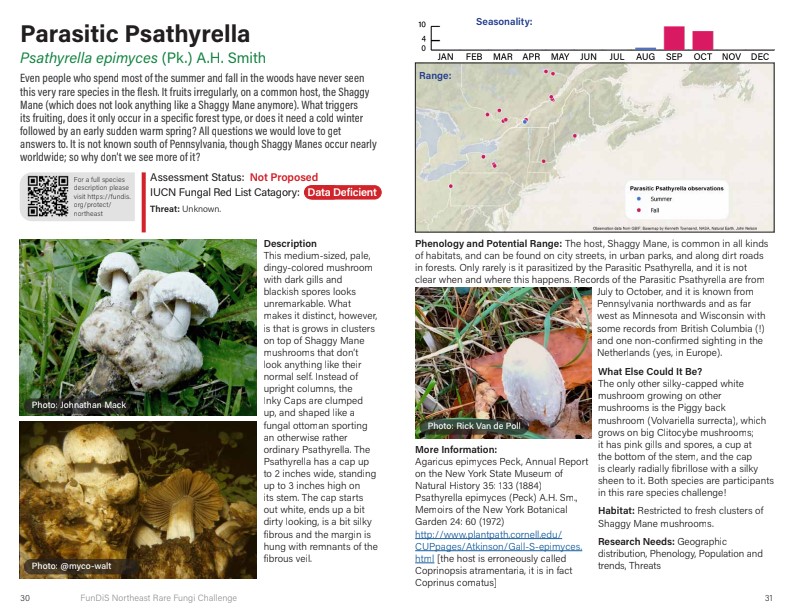2023 Sequencing Results
For those interesting in what was successfully sequenced last year, you can view them here.
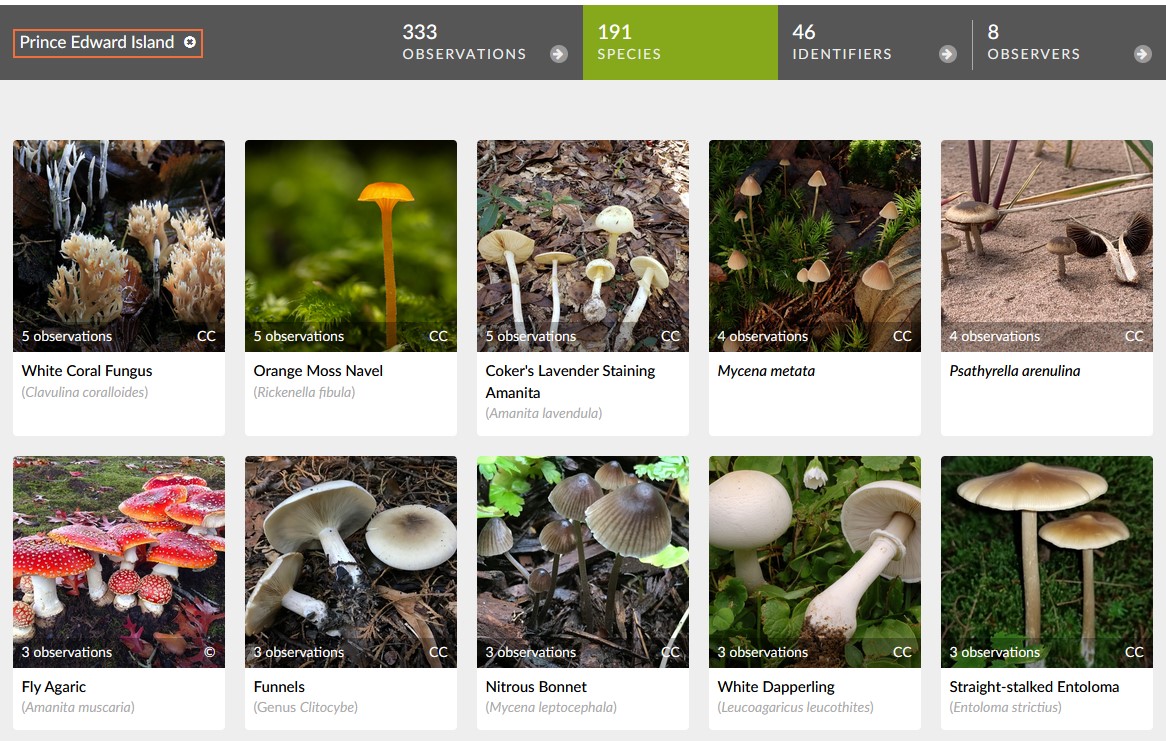
For those interesting in what was successfully sequenced last year, you can view them here.


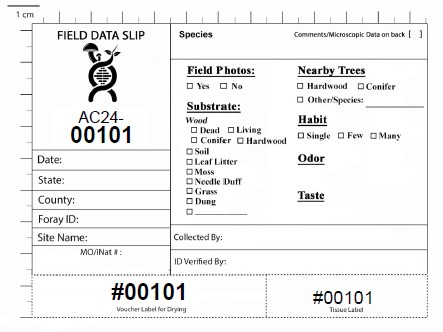
As mentioned earlier we have free sequencing available to us this year. If you are interested in collecting some specimens and including them, I have have created an information/instructions page, which can be found here. If you find something unique and just want to meet up or drop it off, that also works just drop me a line at ken@mushroomsofpei.ca
The August Continental Mycoblitz is fast approaching, August 9-18. We will be organizing two events:
August 10, 2024 10:00 - 1:00 - (RAIN OR SHINE) Ken Sanderson will lead a blitz of Strathgartney Provincial Park. Participants will spread out to various different trails and habitats in the area and reconvene to go over what was found. Registration in advance is required by emailing: ken@mushroomsofpei.ca
August 28, 2024 Mushroom walk with Rosemary Curley, watch for details.

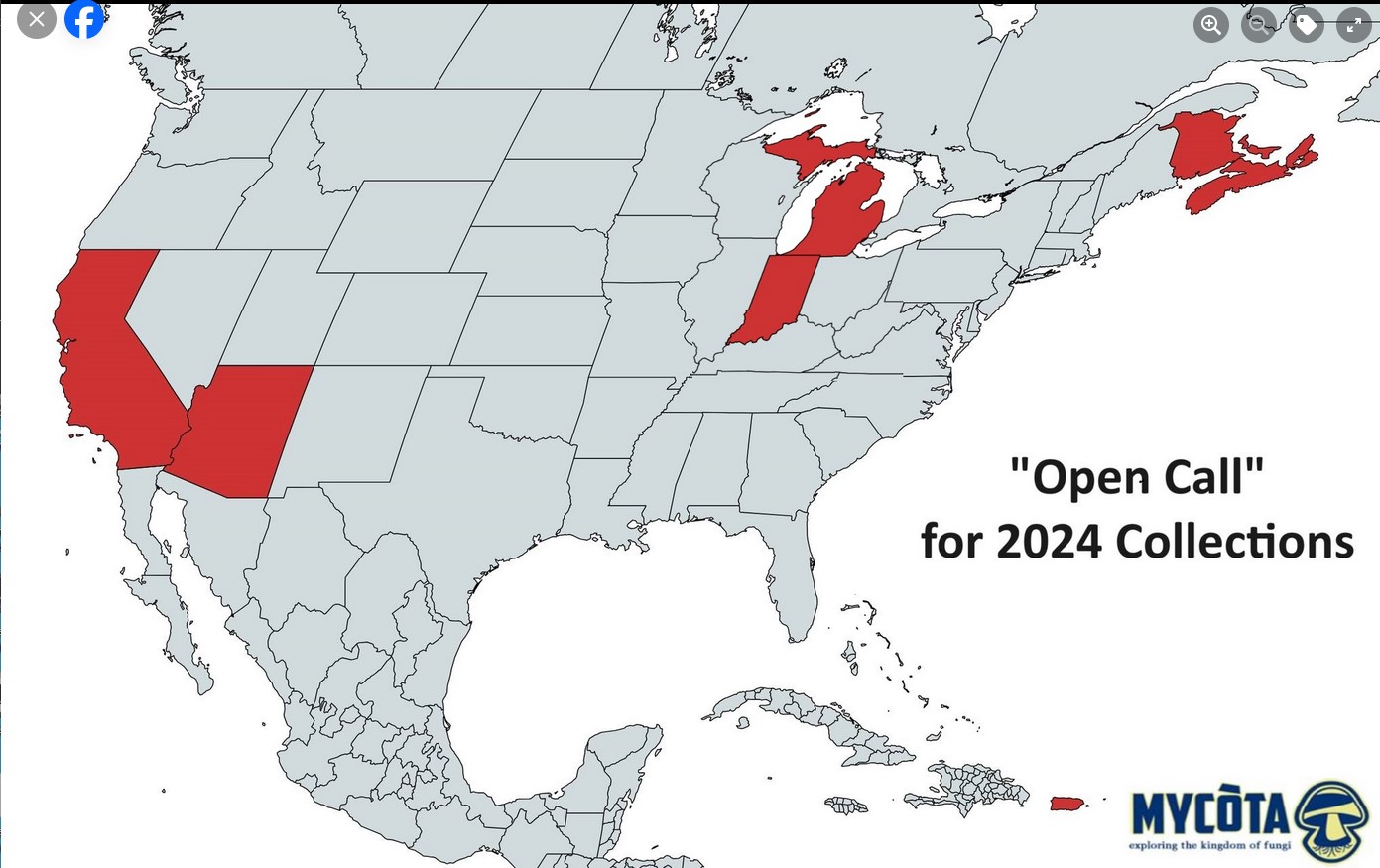
Great news for our community! PEI, alongside New Brunswick and Nova Scotia, has been offered an exciting opportunity by Mycota: free DNA sequencing for specimens collected in 2024. This generous offer allows us to broaden our collection window beyond the Mycoblitz events, though those will still feature in our calendar. Last year, we noticed some hesitation around the collection and preservation of specimens. To address this, we're considering a training workshop aimed at boosting confidence and participation in specimen collection. Would this be of interest? Please let me know.
In more exciting news, we've completed the analysis of specimens from last summer's Mycoblitz. Among the 126 submissions, although 10 yielded no sequence and 16 were of low quality, the efforts were far from fruitless. We discovered 5 novel sequences, which are the first of their kind on record, and assigned 4 new provisional names to sequences currently unidentified to species level.
These findings are invaluable; not only do all the sequences enhance our official species list, but notably, 58 of the identified species are new records for PEI. This significantly advances our objective of thoroughly documenting local species diversity.

Saw, and liked, this quote by George Christie:
“Whoa there, wait a minute!” I hear you thinking. “Fungi? Why should I care about fungi? If I save the plants and animals, won’t the fungi be fine as well?” Actually, it’s very likely the real truth is the other way around. Saving the fungi should be considered critical to saving the animals and the plants. We routinely say that, in nature, everything is connected. We forget to mention however, that the connection is most often fungal.

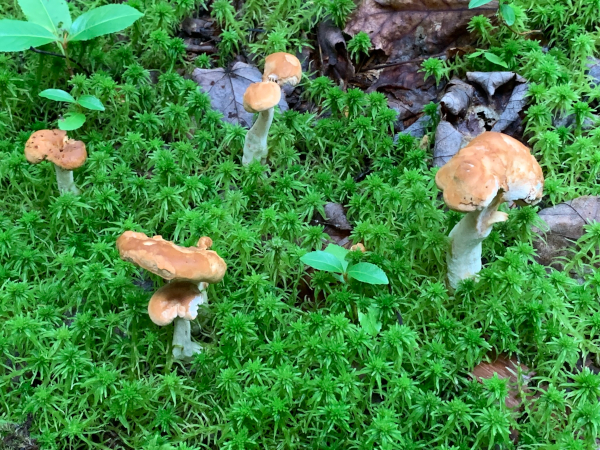
Among the 40 DNA sequences we analyzed this past week, a few stand out, one of which is Hydnum atlanticum. This species remained undescribed until our colleagues in New Brunswick, as part of their comprehensive Hydnum survey, gathered enough specimens to formally identify it. Their findings are documented in a recent publication, accessible here. Initially, Hydnum atlanticum was known to inhabit New Brunswick, Newfoundland and Labrador, and one observation in New York.
Our contributions during the Summer Mycoblitz of 2023 have expanded its known range. A specimen collected from Prince Edward Island (PEI) has been confirmed as Hydnum atlanticum through DNA sequencing, marking an exciting expansion of our understanding of this species' geographic distribution.
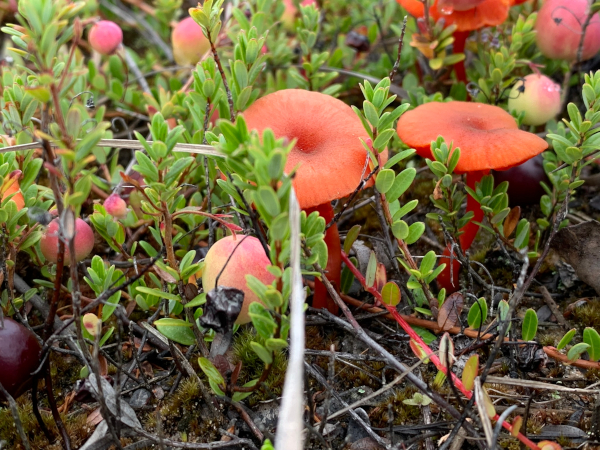
Another notable result, was the intriguing find of the Waisted Waxcap (Hygrocybe substrangulata), spotted in the unique environment of coastal sand dune slacks, cohabiting with Bog Cranberry (Vaccinium oxycoccus). Initially, after consulting with a Waxcap specialist, our sighting was suspected to be what was thought a sub-arctic species.
Further exploration in similar habitats along our coastal sand dunes yielded more specimens. DNA sequencing has since confirmed their identity, significantly expanding our knowledge of its presence and distribution.
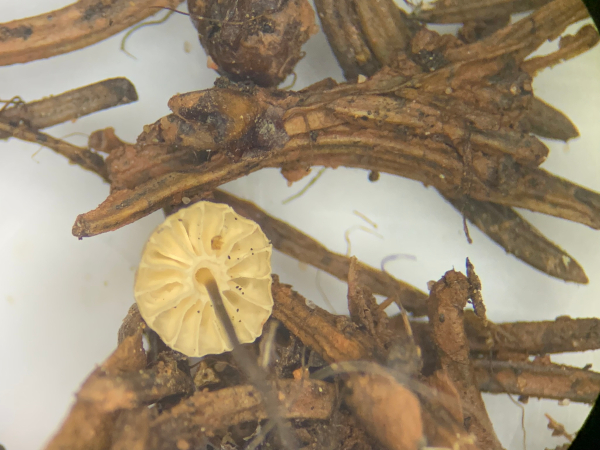
During last summer's survey, we encountered the Collared Parachute mushroom (Marasmius rotula) in two unusual locations. Typically found on hardwood debris, these mushrooms were instead growing on spruce needles, a substrate not commonly associated with them. This deviation sparked curiosity, as literature offers mixed views on the species' substrate preference, with some sources hinting at its adaptability to spruce, while others suggest a close relative, Marasmius wettsteinii, is the spruce-dwelling counterpart.
To resolve this ambiguity, we conducted DNA analysis, which confirmed our specimens as Marasmius wettsteinii. This finding not only adds a new dimension to our understanding of the species' ecological range but also marks the identification of two distinct habitats for Collared Parachutes on PEI, challenging previous assumptions about their substrate specificity.

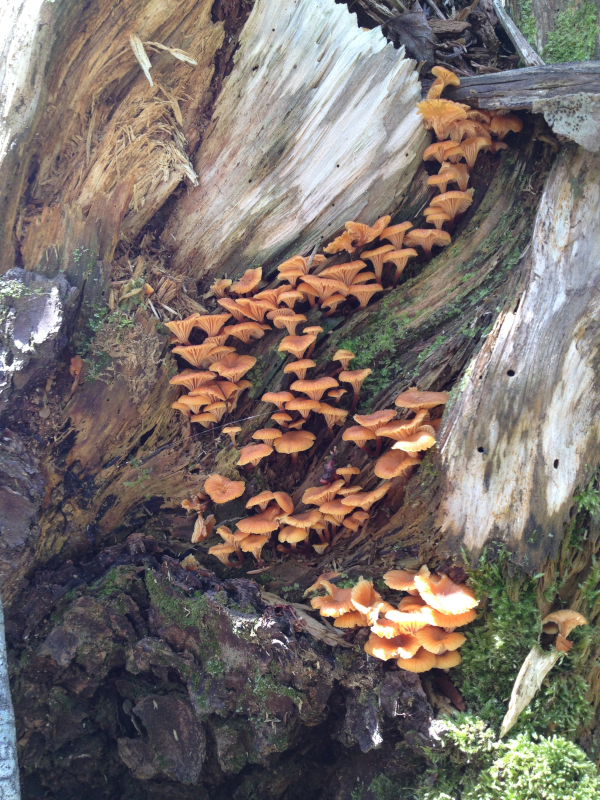
We now have DNA sequences from 36 of the 495 specimens submitted in 2023. The results returned this week were largely as anticipated or inconclusive, making their significance challenging to assess. However, one significant result was the sequence of a Pinewood Gingertail (Xeromphalina campanella) specimen. This species is fairly common across PEI with 37 observations of Xeromphalina species, 28 of which are Xeromphalina campanella, in 24 Atlas squares.
Xeromphalina are easy to identify:
Guidebooks often highlight two common species: Xeromphalina campanella, found on softwood, and Xeromphalina kauffmanii, which prefers hardwood. However, recent sequencing of specimens from Newfoundland and Quebec revealed they are actually a different species, Xeromphalina enigmatica, which will grow on both types of wood. To verify if this phenomenon extends to our area, I included a specimen in our 2023 collection for analysis. The results confirmed our specimen to be X. enigmatica, aligning with these recent discoveries.
This revelation challenges our understanding of the geographical distribution of Xeromphalina campanella, necessitating further DNA sequencing for accurate identification due to the lack of visible differences between X. campanella and X. enigmatica. Given the findings, it's reasonable to presume that PEI predominantly hosts X. enigmatica, rather than X. campanella. Additionally, X. kauffmanii, documented in Nova Scotia and distinguishable by its larger spores, could potentially be present in PEI.
If you encounter a Pinewood Gingertail on hardwood, please collect samples or contact me for collection and DNA analysis in 2024.

A new DNA sequence has trickled in, this time for Cortinarius "torvus-IN01" which was found at Strathgartney Provincial Park. This is currently the 23rd observation and a first for Atlantic Canada.

2023 proved to be an exceptionally fruitful year for the Mushroom Atlas, and we owe a tremendous debt of gratitude to all who contributed observations and ventured into the province's lesser-observed regions. Over the past two years, we've seen a significant expansion in our Atlas squares, boasting 20 research-grade species, soaring from just 13 to an impressive 62!
Key achievements of 2023 include:
Other exciting finds are anticipated to be announced as our DNA sequencing analysis are completed. Among the first notable discoveries is Hydnum subolympicum, an uncommon hedgehog mushroom. While it is more common in the eastern United States, this species is uncommon in Atlantic Canada, with only six known observations to date: Newfoundland & Labrador (2), New Brunswick (2), Nova Scotia (1), and Prince Edward Island (1).


We have gathered an estimated 300 specimens for the Fall Continental Mycoblitz, plus many other observations added to the inaturalist project. Great work!
While many interesting fungi were found, one of those observations was a target of the FunDiS Northeast Rare Fungi Challenge, the Parasitic Psathyrella (Psathyrella epimyces), found growing on a shaggy mane mushroom it had parasitized. You may learn more about this mushroom, and the FunDIS Challenge by clicking on the image below.
